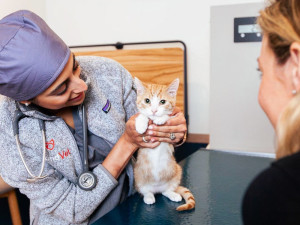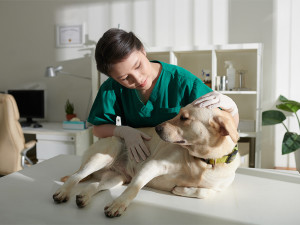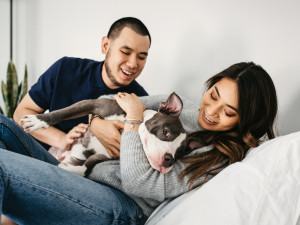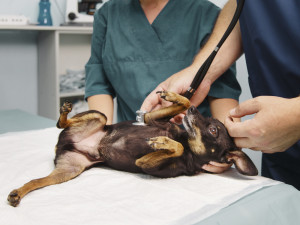8 Things Your Veterinarian Wishes You Wouldn’t Do
Common vet pet peeves, if you will.
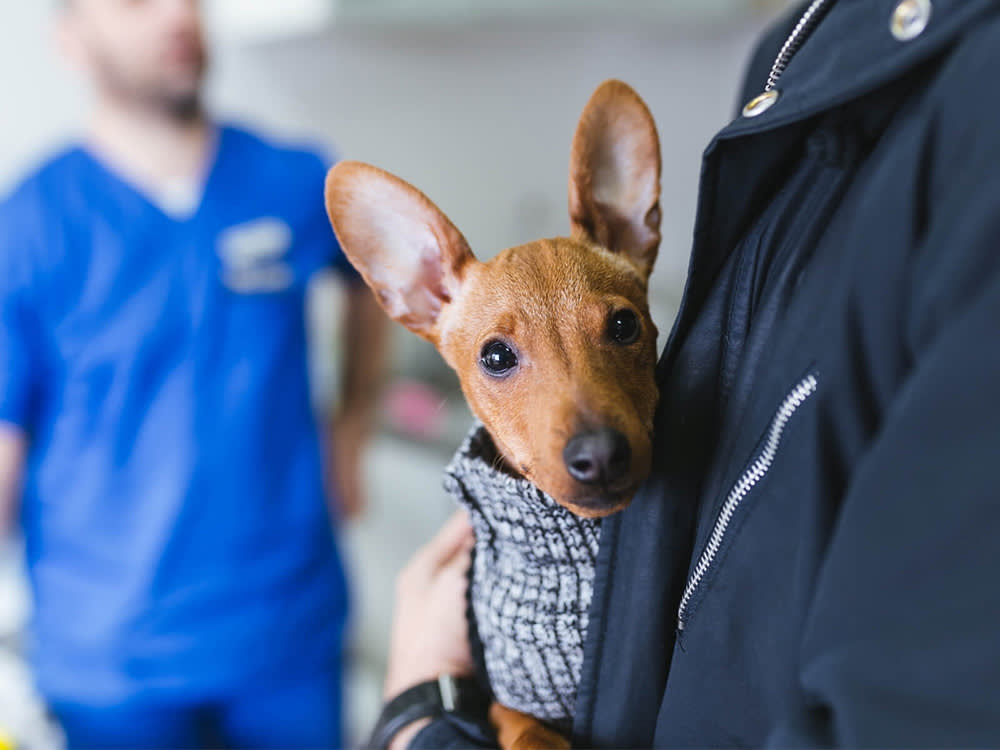
share article

Your pet wants you to read our newsletter. (Then give them a treat.)
Most pet parents love their vets and, for the most part, the feeling is mutual. After all, you’re working together for a common goal: good health and happiness for your best friend. Good news: your vet probably appreciates you, so don’t worry. Veterinary neurologist Dr. Susan Wagner praises the thoughtful generosity of her human clients. “The good ones will even take out [credit cards] and pay for a person in need,” she says. “They more than make up for the bad ones.”
Every now and then, however, people make their vets’ lives more difficult. The Wildest asked vets to share some of their pet peeves, which are rarely about the pet and mostly about, well, the people. So try your best not to...
Show up late.
Not surprisingly, no-shows, lateness and general rudeness are high on the list. Dr. Nancy Kay says: “Arriving late for appointments is a biggie, especially for new clients who need to fill out paperworkopens in a new tab. Our receptionists always advise arriving a bit early, but invariably, some clients arrive late and then wonder why we can’t fit everything we need to do into the office visit that day.”
Bring other pets to appointments.
“We probably average about one missed appointment a day,” Dr. Arthur Wolfheiler adds. Sometimes clients walk in without an appointment or even bring along an extra pet. Adding insult to injury, they may also try to wiggle out of paying for the additional exam.
Dr. Bruce Coston has had the same experience: “This trashes our schedule and makes other people wait unnecessarily.”
Fail to communicate.
A failure to communicate ranks as the biggest peeve inside the exam room. Perhaps from embarrassment, clients may neglect to mention that their pets are aggressiveopens in a new tab or particularly nervous in vets’ offices, and some even laugh when a dog bitesopens in a new tab or cat scratchesopens in a new tab. “Getting bitten or scratched hurts! It’s not funny. That’s why we place muzzles on your fractious pets,” Dr. Coston says.
Dr. Nick Trout agrees: “No one likes to hear, ‘Oh, I forgot to mention, he tends to bite’ when you are checking to see if you just lost a finger.” The vets suggest that you speak up before an incident occurs, and if your dog does bite or cat scratches, don’t laugh. An apology is in order.
Not attempt to calm your pet.
To facilitate communication, remember that you should be doing the talking, not your pet,” Dr. Trout says. “Probably one of my biggest peeves, is when I’m trying to have a discussion with an owner and their dog refuses to stop barking. The owner seems quite happy to talk over the barking as though only I can hear it.”
Make phone calls.
All conversation should be directed, of course, to the vet and not to your cell phone. Here’s how Dr. Wolfheiler handles cell phone rudeness: “When people take a call while I’m examining their pet,” he says. “I start questioning the pet directly: ‘How’ve you been feeling? Got any complaints?’ I hope the people take the hint.”
Let friends take pets to appointments.
Communication problems also arise when a friend or neighbor unfamiliar with your pet’s history brings your pet in for an exam. Dr. Kay lists “Thou shalt be present” as one of her 10 commandmentsopens in a new tab of veterinary visits. “Given the choice, your pet would absolutely, positively want you to be by his side,” she says. “So do not ask your mother, your brother, your housekeeper, or the kid next door to pinch-hit for you.”
Dr. Trout continues: “Obviously, our inability to communicate directly with the patient means we rely on the pet parent for chronology and detail so we can be methodical and thorough in our examination.” He describes listening in frustration as married couples argue over their pets’ symptoms and habits.
Be vague.
Finally, we humans sometimes just don’t answer a simple question. “For example,” Dr. Kay explains, “I might ask whether the person has had to fill the water bowlopens in a new tab more or less than usual. This should evoke a ‘yes’ or ‘no’ response, followed by an explanation. Instead, I might get a response like, ‘Oh, he’s always loved water,’ or ‘I only give him bottled water.’”
Forget your pets’ history. It happens...
Acquiring information needed to diagnose our pets’ problems and assess their needs is often the vet’s greatest hurdle. To illustrate, Dr. Wagner relates the following story. A colleague was questioning a client on the phone, trying to discover a cause for his dog’s anemia. Explaining that sometimes a swallowed metal object is the culprit, the vet asked, “Has your dog swallowed anything unusual?” No response. “Maybe a sockopens in a new tab?” No dice. Feeling desperate, the vet asked, “Could we take an X-ray?” The guy on the other end suddenly said, “Hold on,” and shouted, “Hey, Ma! When’d he eat the doorknob?”
So...if your dog has swallowed a doorknob, you might want to mention it to your vet.
Kathy Ewing
Kathy Ewing has lived in Cleveland Heights, Ohio, for thirty-six years. Her writing has been published widely in the Cleveland Plain Dealer, The Millions, Cleveland Magazine, The Bark among others.
Related articles
![Terrier dog jumping and flying high]() opens in a new tab
opens in a new tabMeet 5 New Innovative Pet Startups
Leap Venture Studio is a springboard for these companies designing “flexitarian” pet diets, state-of-the-art health tools, and more.
![Couple hugging their pit bull]() opens in a new tab
opens in a new tabThe Good Fight: New York Takes Steps to Squash Breed-Specific Legislation
Under the new animal-welfare laws, insurers will no longer be able to discriminate against pet parents of certain dog breeds.
![A dog getting checked out at the vet]() opens in a new tab
opens in a new tabWhat to Expect At the Emergency Vet
It's every pet parent's nightmare — but knowing what happens when you take your dog to the ER can make the experience a little less stressful.
![3 Screenshots side by side of cover photos for three different Veterinarians who post videos on Tik Tok.]() opens in a new tab
opens in a new tab12 Veterinarians You Should Follow on TikTok
TikTok has an ton of veterinarians giving expert (and entertaining) advice at no cost.
